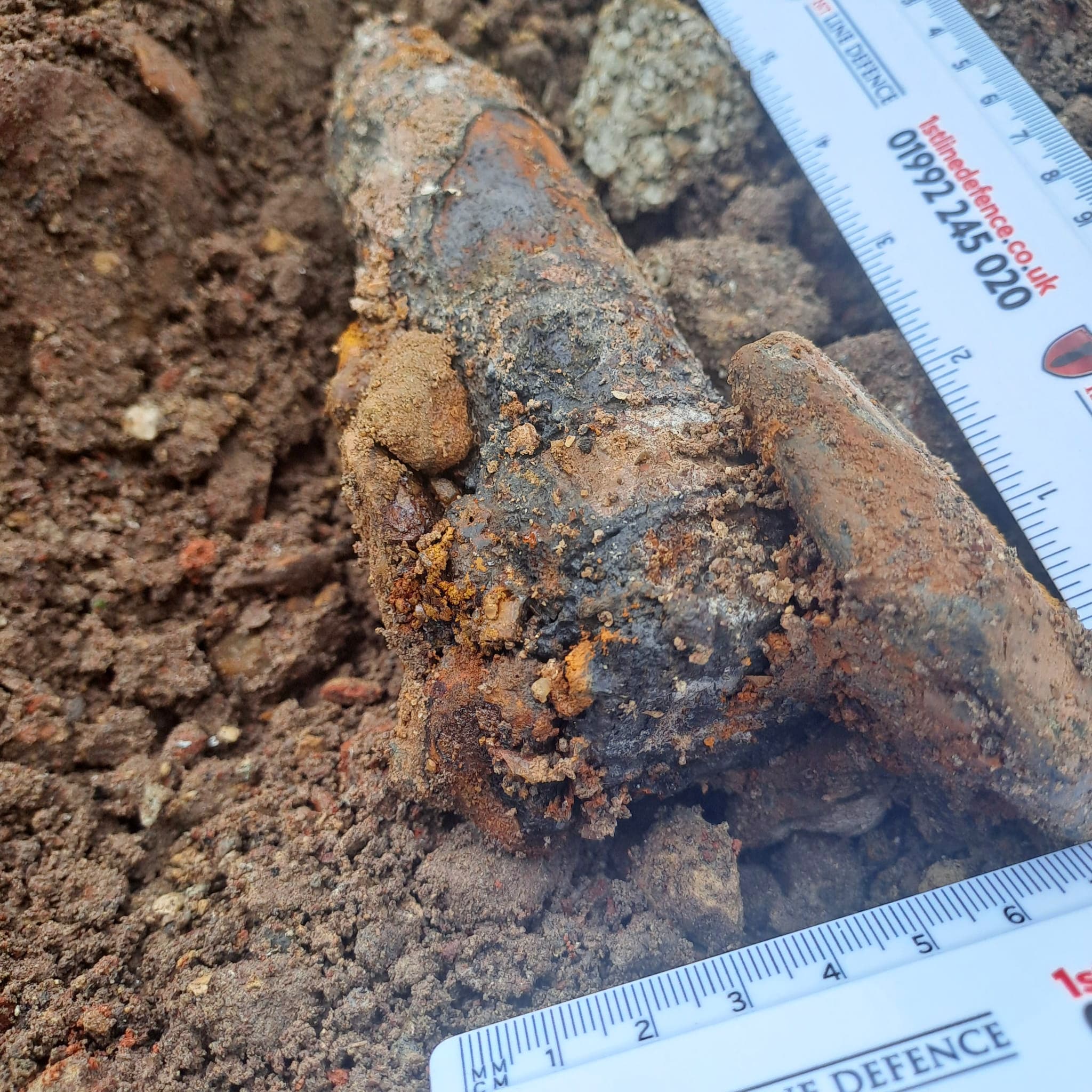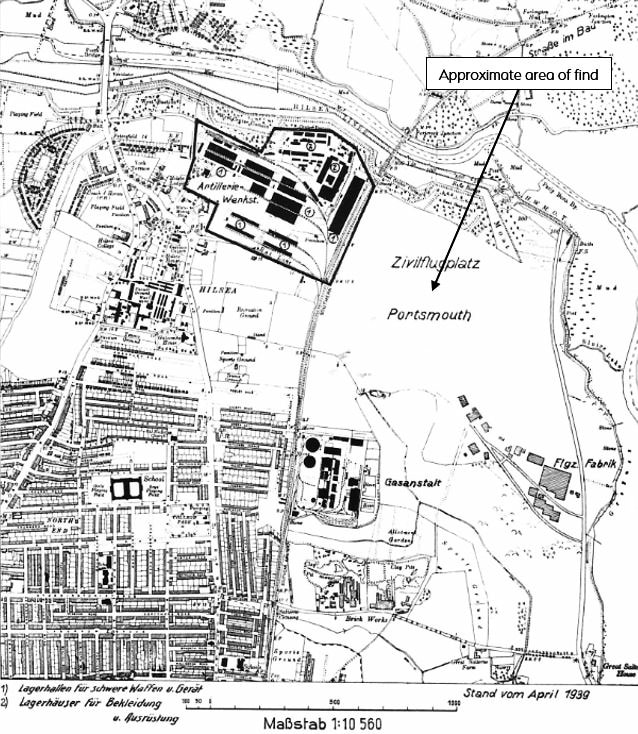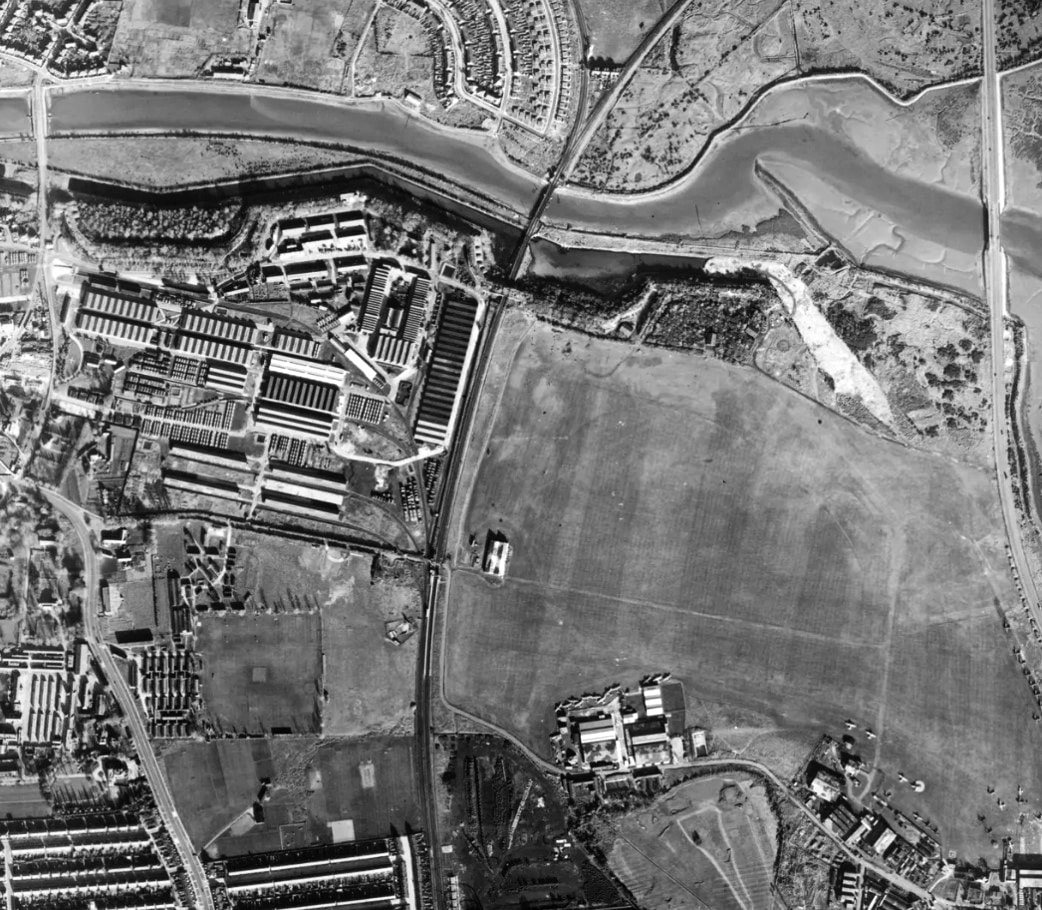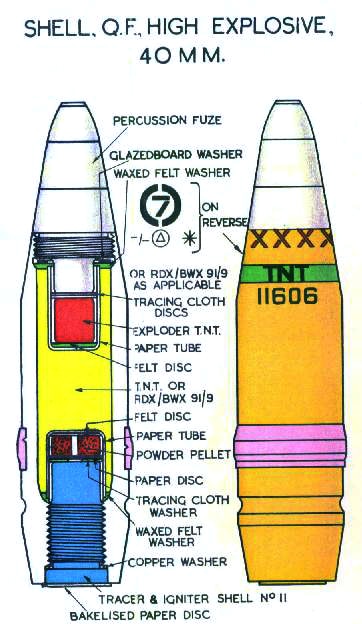1st Line Defence has recently been providing UXO Support for a client’s development site at Portsmouth’s old municipal airport, located in Hilsea.
We have been providing UXO Watching Brief support for our client during excavation works on-site, and this week two 40mm Bofors rounds have been discovered.
Following the initial find, a second projectile was discovered by our EOD specialist, who liaised with the Navy to arrange their safe disposal. Due to the built-up nature of the area, following a hazard assessment, Navy personnel decided to remove the items from site rather than destroying them in situ.
Close-up of a 40mm Bofors round (with rulers for scale) which was discovered on a development site in Portsmouth by 1st Line Defence.
History of Portsmouth Airport
Now fully redeveloped, the former flying ground has had a long and interesting history dating back to the 1930’s. During this time, the airport had three grass runways in a traditional A-frame layout. The land for Portsmouth Airport was purchased by the City in 1930, and opened in July 1932. Portsmouth, Southsea and Isle of Wight Aviation (PSIOWA) moved to the airport that year, and ran regular services to Ryde on the Isle of Wight – and later various international routes were added by other carriers as the airport expanded.
Airspeed Ltd moved to the airport in 1933, manufacturing and testing various types of aircraft, including the Oxford training aircraft during WWII. PSIOWA were ordered to cease flying during the war, and to concentrate on aircraft manufacture and repair. Several thousand military aircraft passed through for modification or repair.
Although a civilian airport, the facility was identified as a target by the Luftwaffe (see target mapping below), and was subject to bombing. It would have been equipped with various air defences including barrage balloons and anti-aircraft guns. It is probable that the items which were recovered were a legacy of UXO contamination originating from the airfields defences.
Luftwaffe reconnaissance map of the incident area in Portsmouth from 1939. Image credit: Internal Resource
Location where a couple of 40mm Bofors rounds were found in a flying field to the east of factory buildings seen here in November 1940. Image credit: Historic England
Bofors 40mm Anti-aircraft gun
The Bofors 40mm Anti-aircraft gun (often referred to simply as the ‘Bofors 40mm gun’ and the ‘Bofors gun’) is an anti-aircraft autocannon, designed in the 1930s by the Swedish arms manufacturer AB Bofors.
The gun was designed as an intermediate anti-aircraft gun, filling the gap between fast firing close-range small calibre anti-aircraft guns and slower firing long-range high calibre anti-aircraft guns – a role which previously was filled by older outdated guns.
Throughout WWII, it became one of the most popular and widespread medium-weight anti-aircraft guns. The Bofors 40mm L/60 was for its time perfectly suited for this role and outperformed competing designs in the years leading up to WWII in both effectiveness and reliability.
Product features:
- Could be assembled in transport or deployed mode
- Gun could elevate up and down
- Gun platform could rotate left and right
- Outrigger could swing open or closed
- Extra ammo and gun barrel included
Schematic drawing of a 40mm Bofors round.
Need UXO Support on your project?
If you would like more information about how to minimise UXO risk on your project, contact one of our Sales Team on +44 (0) 1992 245020 or email info@1stlinedefence.co.uk.















